| The camp site in Lunenburg is within walking distance
of the town so we were able to walk down and admire the architecture. The
whole centre of the town is a world heritage site, so many of these houses
are listed buildings. As a result of the restrictions, some are in a poor
state of repair. However this is one of the better ones. I could live in a
house like this. | 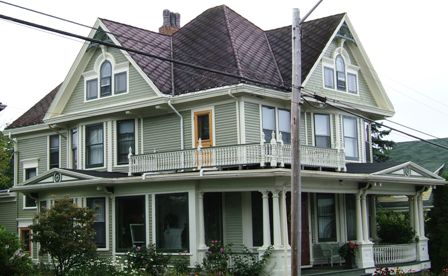 |
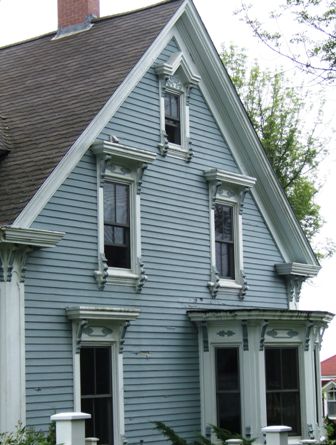 |
Some of the older houses have a lot of detail around the windows which looks
really nice when picked out in the paintwork. Almost all houses are painted.
It is also common to have an extended bay window hanging out over the main
entrance, something which is an architectural detail of the area. |
| The town is built on a hillside so flat plots are at a
premium. Some of the hills are quite steep. But it does make for good views
of the bay from the upper windows. | 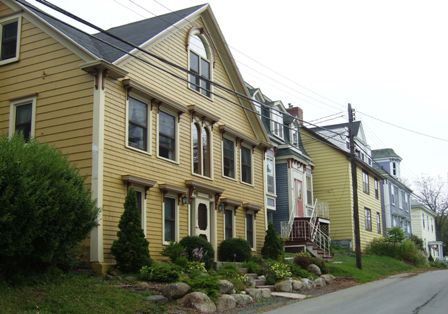 |
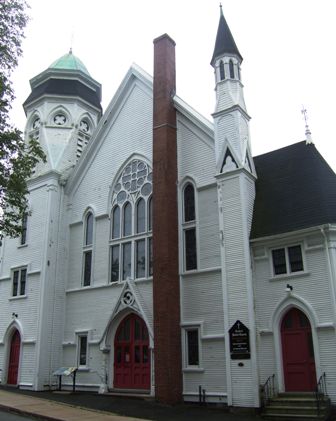 |
There are several large churches in the town. This is the Central United
church which has its roots in the Methodist movement. The congregation
formed in 1813 and this church was built in 1885 and could accommodate over
1000 worshippers. |
| This is St Andrews Presbyterian church built in 1828
although the congregation has worshipped in Lunenburg since since 1759. It
is the oldest Presbyterian establishment in Canada. You can just see the
weather vane on the top of the tower. | 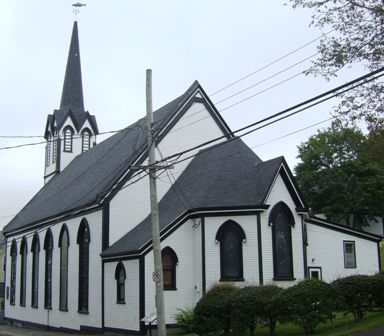 |
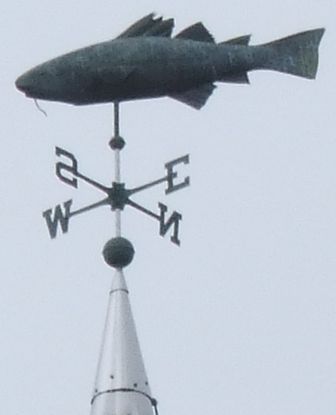 |
The weathervane is surmounted by a codfish which was the mainstay of the
local economy for many years. |
| This is St Johns Anglican church. The building was
started in 1754 and served a largely Germanic congregation. It was an
important symbol of British authority and Anglican dominance for the early
settlers. It is built in a style known as Carpenter Gothic. | 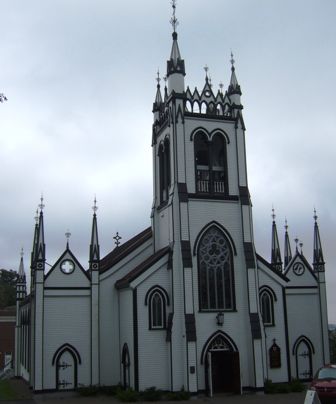 |
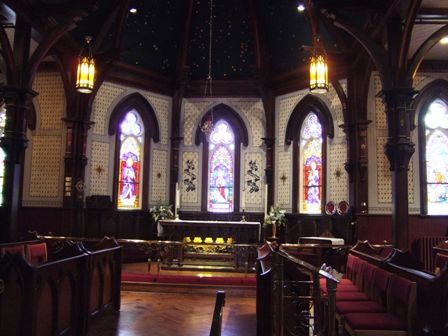 |
There is some beautiful stained glass in the windows although much of it has
been rebuilt since the disastrous fire in 2001. |
| The roof is particularly interesting and has been
painted with stars in the heavens. | 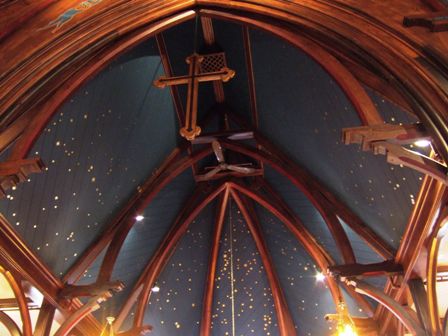 |
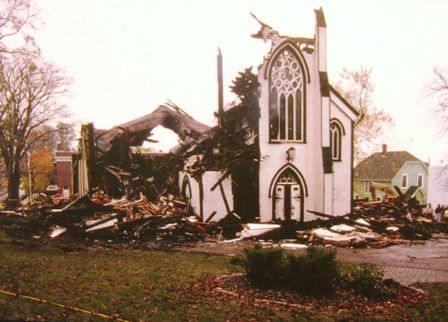 |
The fire in 2001 started as a small one but by the time it was controlled
much of the wooden church had burned. |
| You can rebuild a wooden church much more easily than
a stone one. This technique was not available for the original construction!
The original Jessen bell was cast at Whitechapel, London in 1814 and served
for 185 years. It crashed through the tower in the fire and is now displayed
outside the church. | 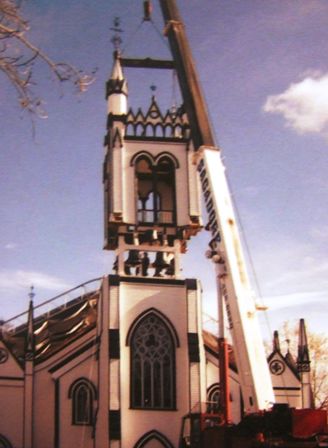 |
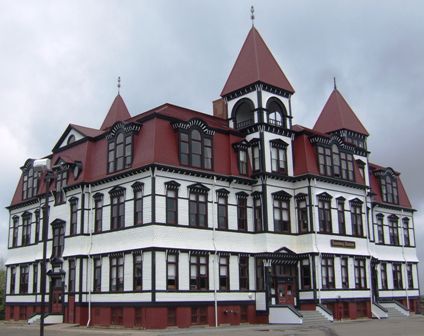 |
This is the recently refurbished Lunenburg Academy. It is the third, being
built after the second was destroyed by fire in 1893. The first was built in
1838. Today it is used as an elementary school. |
| The most famous vessel from Lunenburg was the fishing
schooner Bluenose which out-sailed all competition for the forerunners of
the Americas Cup. The original sank off Haiti in 1947. This is an exact
replica called Bluenose II. It is owned by the government of Nova Scotia and
managed by the Lunenburg Fisherman's Museum, so the crew are civil servants! | 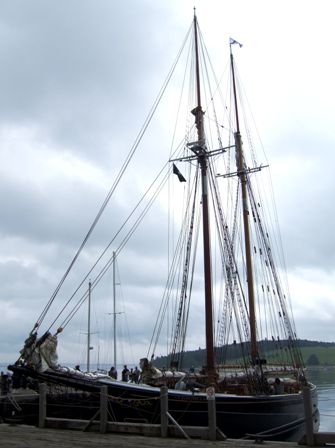 |
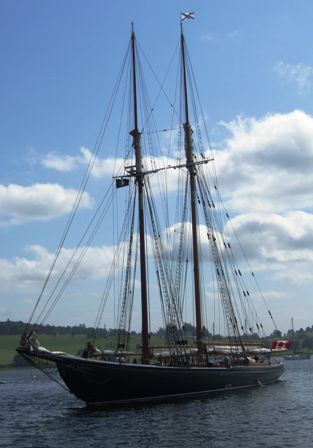 |
It sails as an ambassador calling at many ports, although Lunenburg is its
base. We were lucky to catch it because it is not often here in the summer.
In the course of the afternoon it set off for its next visit to an Acadian
festival on the west coast of Nova Scotia (where we actually got to go on
board). |
| Alongside it was a comparable ship. This is the Pride
of Baltimore. We spotted them both later, sailing against one another in the
bay. Both are crewed during the sailing season by temporary sailors such as
University students and others. | 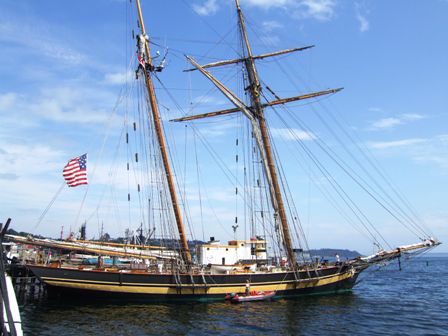 |
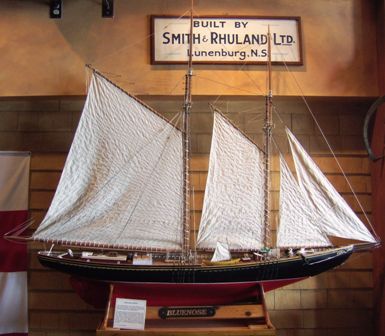 |
The town is full of models of the Bluenose. This was on the wall in the
restaurant/pub where we had lunch. It is about 5 feet long. |
| There are many eating houses on the dockside. One of
the waitresses had a tee shirt with the words "Lunenburg - a nice drinking
town with a fishing problem". Seemed to sum it up nicely. | 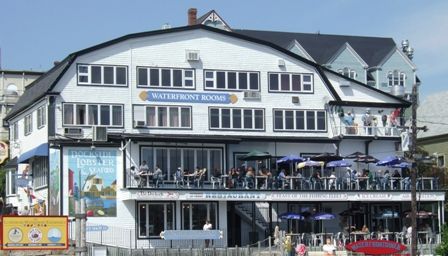 |
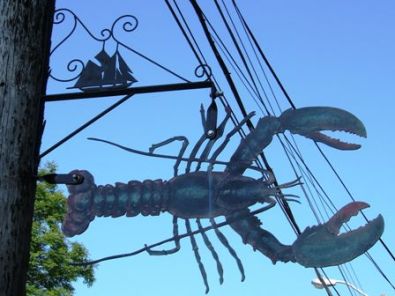 |
The lampposts all have brackets with schooners and different fishy
creatures. |
| This is one of the sharper examples! | 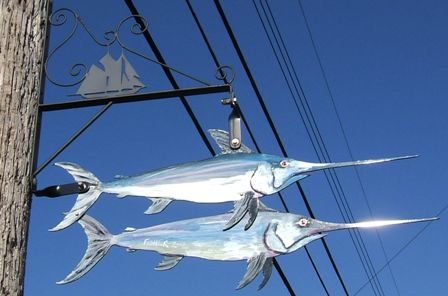 |
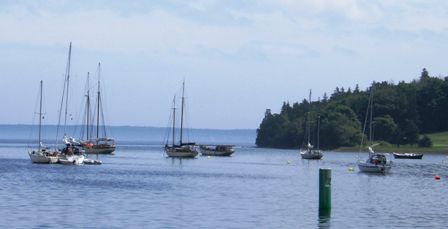 |
The small harbour bay had a number of small sailing craft but there weren't
any of the larger millionaire-type yachts or cruisers in evidence. |
| A reminder of the shipbuilding which used to take
place here is the Dory Shop. Dories are small boats which were taken out on
the larger fishing schooners to assist in the long line fishing for cod off
the Newfoundland banks just a little to the north. | 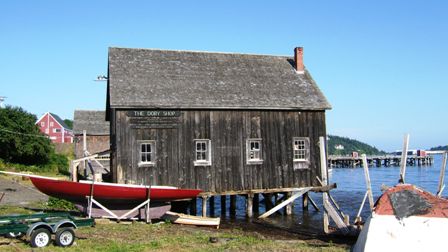 |
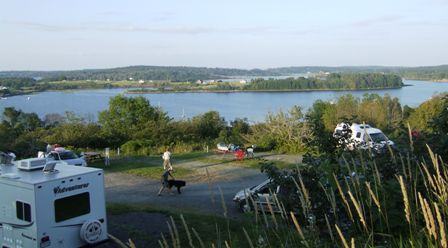 |
There are actually two bays at Lunenburg which is built on a headland. The
campsite is at the top of the town and we could see both bays from our site. |
|